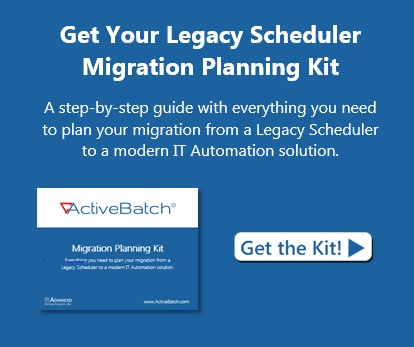While APIs have been around for more than a decade, today’s API-connected services are emerging as the preferred method for cloud, mobile devices, and virtually any end-point you can name. Most IT organizations are acting as both providers of APIs – creating APIs to provide internal system access, as well as API consumers – connecting their applications to externally provided APIs.
Recently I listened to a webinar from EMA titled “Back to the Future with the “API Economy”, which assessed the use of APIs from the consumer and provider sides of the equation and presented survey findings on the management and challenges of delivering API services.
According to the survey, the top three internal use cases for APIs within companies are:
- Providing access to internal programs or data for employee mobile users
- Simplifying access to internal programs or data for software developers
- Utilizing APIs delivered by external entities to interact with the public cloud
Organizations are internally using APIs to manage data, improve processes, and better collaborate between departments. In fact, EMA found that organizations have between 100,000 and 1 million API transactions per month accessing their internal APIs. APIs are giving users the ability to more easily develop processes dependent on disparate systems or applications, resulting in faster and more efficient operations.
APIs for IT Automation
APIs are very useful from an automation viewpoint because like automation, APIs work toward the same goal of helping disparate systems work together. The goal of IT Automation is to connect various systems and applications within the enterprise for end-to-end seamless interaction. APIs do the same thing except they extend that accessibility both ways – allowing external users to connect to internal systems and allowing internal users to connect to external systems. This kind of accessibility is really powerful for today’s data-driven business needs.
And what’s even more powerful is the combination of API accessibility with the end-to-end capabilities of workload automation.
A workload automation solution with built-in API accessibility allows users to consume APIs and reuse these methods as templated Job Steps for virtually unlimited third-party integration. As a result, instead of spending time researching, writing, and testing code, users can leverage reusable Job Steps to create end-to-end workflows.
This kind of reusability extends the use of APIs even further as organizations can call on Job Steps containing the exposed methods each time they need to use these methods in a new workflow. So in addition to the integrations a workload automation typically provides, built-in API accessibility means organizations can integrate with any third-party application that has a provided API service.
As the API economy grows and businesses more heavily rely on APIs both internally and externally, EMA noted there will be challenges that will impact API delivery. Some of the top challenges already reported by companies managing provider APIs are high traffic volumes and security.

